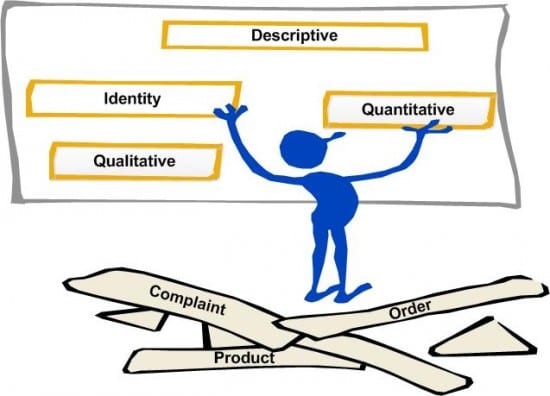A comprehensive checklist for auditing different customer data types in a CRM or Email marketing system
In today’s world of ever-increasing data availability, volume and variety the challenge to know which data is valuable to you is a key step in starting to build a marketing solution. An often-cited response is that ‘all data is important’ and this may be true, but to help decide which elements are critical in the initial stages of building your solution a method to identify at the value of each type of customer data is key.
In this post, I will look at how to audit customer data based on its type and value. The examples will show why it's important to be selective when reviewing customer data in CRM and Email marketing.

Over numerous implementations of Marketing Database solutions, I have seen many types of data, including ‘pet’s name’, ‘favourite colour’, ‘number of car doors’ which all have potential value to different markets:
- Pet’s Name – Pet Supplies Retailer.
- Favourite Colour – Retail, particularly clothing.
- Number of Car Doors – Motor Insurance industry.
When first considering each data element, the ability to classify it can help determine how valuable and which phase of a solution it should be delivered in, if at all.
Need a plan to create a winning marketing strategy?
Get started today using a tried and tested step-by-step process to optimize your marketing.
Start Now
The following list provides examples of data elements and will help you quickly identify the critical pieces of information to your business and goals from the various different data sources. Typically the priority order of the data is as follows:
1. Customer Identity Data
At the heart of database marketing is the individual, so knowing who the individual is and being able to build and maintain a Single Customer View provides the first type of data, Identity. This includes any information which enables an individual to be uniquely identified and includes:
- Name Information – Title, First Name (Forename), Last Name (Surname), Designatory letters, etc.
- Person Information – Date of Birth, Gender, etc.
- Postal Address Information – Building Number, Building Name, Address Lines, Town, County, Postal/Zip Code, Country, etc.
- Telephone Information – Home Telephone No., Work Telephone No., Mobile No., etc.
- Email Address Information – Personal Email Address, Work Email Address, etc.
- Social Network Information – Facebook Identifier, Twitter Address, Linkedin identifier, etc.
- Account Information – Details of your customer’s account ids or user ids.
- Job Information – Company Name, Department Name, Job Title, etc.
- Permission and Suppression Data – Not distinctly an identity element of data, but equally important is the information concerning permission to communicate and reason for not communicating (suppressions).
2. Quantitative Data
Once you understand who the individual is the next key element is the measurable operational data, which enables you to understand how your customer has behaved, transacted or reacted with your business. This includes any information which describes activity completed between the customer and your business:
- Transactional Information (Online and Offline) – Number of products purchased, actual products purchased, Order/Subscription Value, Order/Renewal dates, product abandonments (abandoned baskets), Product Returns, etc.
- Communication Information (inbound and outbound) – Communication date, communication channel, Opens, Click throughs, etc)
- Online Activity – Website visits, product views, online registrations, etc.
- Social Network Activity – Facebook likes, Twitter interactions, etc.
- Customer Services Information – Complaint details, customer query details, etc
3. Descriptive Data
Understanding who the individual is and the type of activities they complete with you provides a good starting point for any marketing database. To gain a fuller perspective of your customer additional profile information is crucial. This provides additional information about your customer, beyond the identity and quantitative details, covering:
- Family Details – Marital status, number of children, age of children, etc.
- Lifestyle Details – Property type, car type, number of car doors, pet ownership, etc.
- Career Details – Profession, Education level, etc.
4. Qualitative Customer Data
The final type of data you will come across provides further description of your customer and potential behaviour and is usually provided by questionnaire type information where an attitude, motivation and opinion is provided:
- Attitudinal information – How do you rate our customer service, how do you rate the value of the product, how likely are you to purchase our product again, etc?
- Opinion – What is your favourite colour, where is your favourite holiday destination, etc.
- Motivational – Why was the product purchased (personal use, gift for someone, etc), what was the key reason for purchasing our product (locality, price, quality), etc.
Using this simple classification process and relating them to your core business goals, will enable a quick identification of which data provides the information critical to the core success of your business. This can then be used to plan the appropriate delivery phases, with clear understanding of the value achieved from each data item included, enabling you to answer the question ‘How valuable is knowing my customer’s pet name?’ to your business.
Need a plan to create a winning marketing strategy?
Get started today using a tried and tested step-by-step process to optimize your marketing.
Start Now








